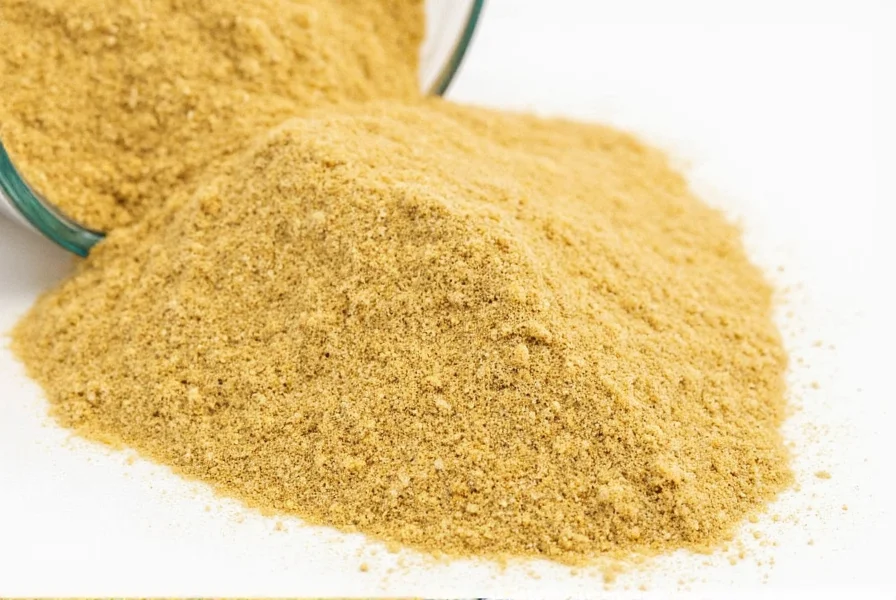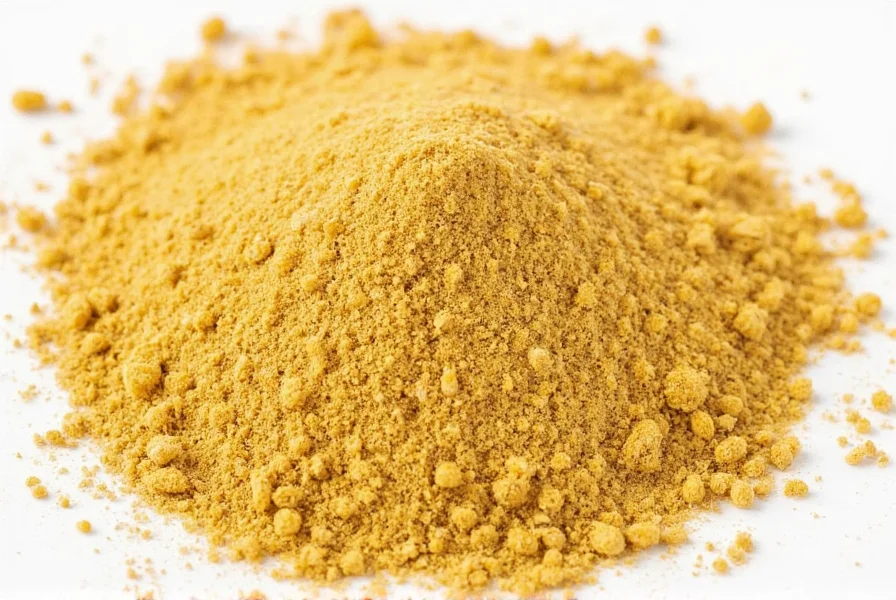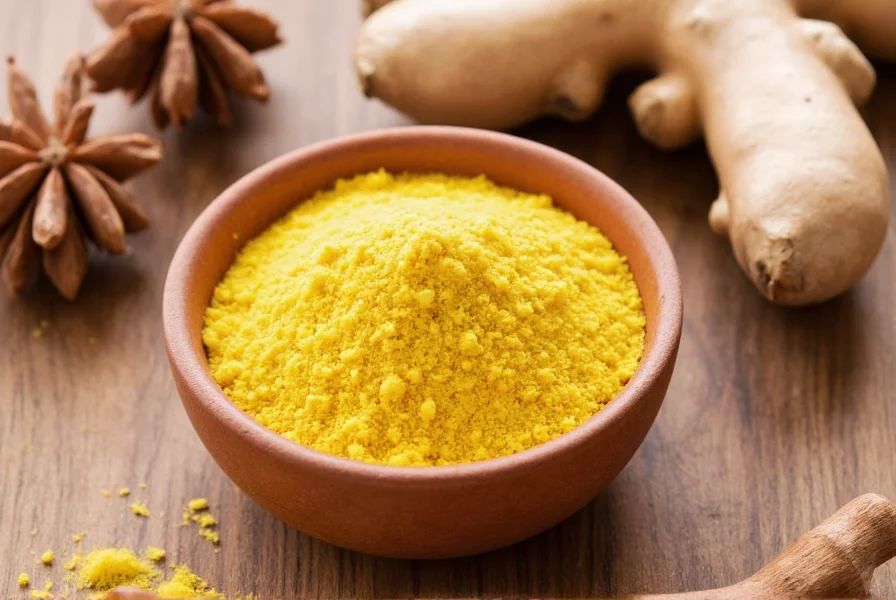The most effective substitutes for ginger include galangal for Southeast Asian dishes, allspice for baking, mace for mild flavor, cardamom for sweet recipes, and a combination of cinnamon with a pinch of cayenne for balanced heat. Fresh substitutes work best in savory dishes while dried spices are ideal for baking, with conversion ratios varying by recipe type and desired intensity.
When your recipe calls for ginger but you're out of this versatile root, knowing reliable alternatives can save your cooking experience. Whether you've run out of fresh ginger, have an allergy, or simply want to experiment with different flavor profiles, having a comprehensive understanding of ginger substitutes ensures your dishes maintain their intended character. This guide explores practical alternatives backed by culinary science, helping you make informed substitutions that preserve the integrity of your recipes.
Why Substitute Ginger?
Ginger's unique flavor profile—combining warmth, spice, and subtle citrus notes—makes it indispensable in many cuisines. However, several situations might require alternatives:
- Unavailability of fresh ginger in your region
- Personal taste preferences or sensitivities
- Dietary restrictions or allergies
- Recipe-specific requirements where ginger's intensity might overpower other ingredients
Top Ginger Substitutes Explained
Galangal: The Closest Flavor Relative
Often called 'Thai ginger,' galangal shares ginger's rhizome structure but offers a more floral, pine-like flavor with less heat. This makes it an excellent substitute for Southeast Asian dishes like Thai curries and Indonesian sambals. When using galangal as a ginger substitute for stir fry, maintain a 1:1 ratio but note it won't provide the same level of spiciness. Galangal works particularly well in coconut-based soups where its subtle citrus notes complement the broth.

Allspice: The Baking Essential
For ginger substitutes in baking, allspice provides the most comparable flavor profile. Its complex notes of cinnamon, nutmeg, and clove mimic ginger's warmth without overwhelming heat. When replacing ground ginger in cookies or cakes, use a 3:4 ratio (¾ teaspoon allspice for every teaspoon of ground ginger). This ground ginger replacement option works especially well in spice cakes, gingerbread alternatives, and autumn-inspired desserts where you want warmth without intense spiciness.
Mace: The Delicate Alternative
Mace, the outer coating of nutmeg, offers a more subtle flavor that works well as a mild ginger substitute for sensitive palates. Its delicate warmth makes it ideal for dishes where ginger's sharpness might dominate, such as delicate sauces or light soups. Use mace at a 1:2 ratio (½ teaspoon mace for every teaspoon of ginger) to avoid overpowering your dish. This alternative shines in seafood dishes and creamy sauces where you want warmth without noticeable heat.
Cardamom: The Sweet Option
For sweet applications, cardamom provides a floral warmth that can effectively replace ginger in certain contexts. Its citrusy notes complement baked goods beautifully. When using cardamom as a ginger substitute in baking, particularly in Scandinavian or Middle Eastern recipes, use a 1:1.5 ratio (1½ teaspoons cardamom for every teaspoon of ginger). This works exceptionally well in spice cookies, fruit compotes, and chai-inspired beverages where you want complexity without intense heat.
Specialized Substitution Guidelines
Different cooking methods require different approaches to ginger substitution. Understanding these nuances ensures your dishes maintain their intended flavor balance:
| Substitute | Best For | Ratio | Special Notes |
|---|---|---|---|
| Galangal | Thai curries, soups | 1:1 fresh | Less spicy, more floral; slice thinly for best results |
| Allspice | Baking, spice cakes | 3:4 ground | Provides warmth without heat; ideal ginger substitutes for baking |
| Mace | Creamy sauces, delicate dishes | 1:2 ground | Mild alternative for sensitive palates |
| Cinnamon + Cayenne | General cooking | 1:1 + pinch | Best ginger alternatives for when nothing else is available |
| Cardamom | Sweet recipes, chai | 1:1.5 ground | Excellent ginger substitute in baking for sweet applications |
Substitutes to Avoid
Not all potential alternatives work well as ginger replacements. Turmeric, while visually similar, lacks ginger's characteristic warmth and adds excessive color. Clove provides only heat without ginger's citrus notes and easily overpowers dishes. Black pepper creates heat but misses the complex flavor profile entirely. Understanding these ineffective ginger alternatives prevents disappointing results in your cooking.
Practical Substitution Tips
When implementing ginger substitutes in recipes, consider these professional techniques:
- For fresh ginger substitutes in marinades, add a squeeze of lemon to mimic ginger's citrus notes
- When using dried spices as ginger replacement options, bloom them in oil first to maximize flavor release
- For ginger substitutes in baking, combine allspice with a touch of black pepper to approximate ginger's warmth
- When substituting in fermented foods like kimchi, add a small amount of ascorbic acid to compensate for ginger's natural preservative qualities

Conclusion
Selecting the right ginger substitute depends on your specific recipe requirements and desired flavor profile. The best ginger alternatives maintain the essential warmth and complexity your dish needs while working with available ingredients. Remember that successful substitution isn't about perfect replication but thoughtful adaptation that preserves your recipe's integrity. By understanding each alternative's strengths and limitations, you can confidently navigate any situation where fresh or ground ginger isn't available.
Frequently Asked Questions
Can I use ground ginger instead of fresh ginger in recipes?
Yes, but with adjustments. Use ¼ teaspoon ground ginger for every tablespoon of fresh ginger. Ground ginger has more concentrated flavor but lacks the bright, citrus notes of fresh ginger. For best results in sauces and marinades, mix ground ginger with a small amount of water to form a paste before adding to your recipe.
What's the best ginger substitute for making ginger tea?
For ginger tea alternatives, turmeric provides similar health benefits with a milder flavor, while a combination of cinnamon sticks and black peppercorns creates comparable warmth. Cardamom pods offer a floral alternative that works well in chai-style teas. For closest flavor match, use galangal if available, sliced thinly and simmered for 10-15 minutes.
How do I substitute ginger in curry recipes?
For curry dishes, galangal is the ideal ginger substitute for Southeast Asian curries, maintaining similar flavor profiles. In Indian curries, use a combination of ½ teaspoon each of cumin and coriander with a pinch of cayenne. For Japanese or Korean curries, try a small amount of grated apple with ¼ teaspoon five-spice powder to approximate ginger's complexity without overwhelming heat.
Can I use lemon or lime as a ginger substitute?
Lemon or lime alone cannot replace ginger's warmth, but they can complement other substitutes. For recipes where ginger's citrus notes are important (like certain marinades), combine citrus juice with a mild spice like mace or allspice. Use 1 tablespoon citrus juice plus ¼ teaspoon allspice for every tablespoon of fresh ginger called for in the recipe.
What's a good non-spicy ginger alternative for children's recipes?
For mild ginger substitutes for sensitive palates, try using apple puree with a touch of cinnamon. The natural sweetness and subtle warmth work well in baked goods and sauces. Use 2 tablespoons unsweetened apple puree plus ⅛ teaspoon cinnamon for every tablespoon of fresh ginger. This creates a child-friendly alternative that maintains recipe moisture without the heat.











 浙公网安备
33010002000092号
浙公网安备
33010002000092号 浙B2-20120091-4
浙B2-20120091-4